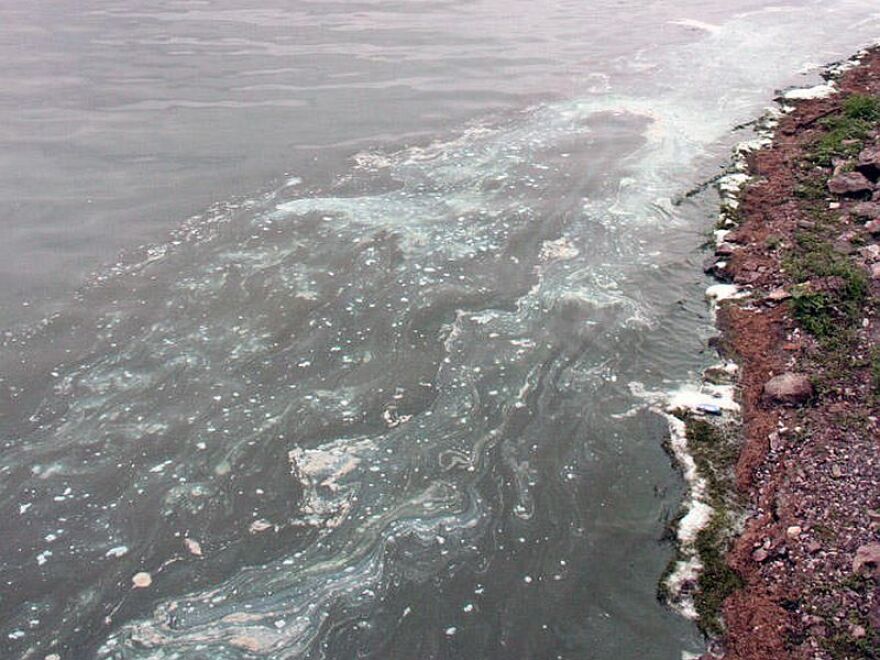Vermont’s phosphorus pollution problem is almost a century in the making and persists today, as the nutrient contained in fertilizer and animal feed continues to accumulate in watersheds.
That’s among the findings in a new University of Vermont study that looked at both "legacy" phosphorus and new inputs of the nutrient.
Excessive phosphorus fuels toxic algae blooms on Lake Champlain and Lake Carmi in Franklin County. Lake cleanup efforts are aimed at reducing phosphorus loading into waterways.
Michael Wironen, a researcher at UVM’s Gund Institutefor Environment and the Rubenstein School of Environment and Natural Resources, looked at the current and historical sources of phosphorus. The findings were published in the journal Global Environmental Change.
The study found that over 90 years, surplus phosphorus built up by 1,000 to 4,500 tons annually, creating a nearly 240,000-ton legacy pollution problem that hinders ongoing control efforts.
“We show that this challenge of legacy phosphorus is one that's gone back to the years prior to World War II. So that's important,” Wironen said. “It challenges the notion that it will be quick to fix things, partly because we have this large accumulation of phosphorus.”
But farms and the state can still take additional steps to address the issue, the researchers concluded, including requiring detailed nutrient management plans that track the inputs of phosphorus in feed.
"We show that this challenge of legacy phosphorus is one that's gone back to the years prior to World War II. So that's important. It challenges the notion that it will be quick to fix things, partly because we have this large accumulation of phosphorus." — UVM researcher Michael Wironen
Focusing on feed for high-producing dairy cows is important, Wiloren said, because the new research shows more and more phosphorus is entering the watershed in the form of feed — not fertilizer.
“Typically when people think about phosphorus, they think about fertilizer, because it’s the stuff that’s got ‘N, P, K’ written on the box,” he said. “So it was pretty surprising to see starting even as early as the 1980s that animal feed was the dominant source of phosphorus coming into the state, to the point that in 2012 we actually saw that animal feed was almost three times as much as fertilizer as a source of phosphorus entering the state.”
Wironen would like to see farms’ nutrient management plans be made available to researchers, so scientists can get a precise view at the phosphorus load from agriculture. Farmers must submit these plans to the state, and some lawmakers in Montpelier have tried to exempt them from Vermont’s public records law.
Wironen did point to one bit of good news in his research: Phosphorus fertilizer is no longer subsidized by the federal government, so fertilizer on farm fields is declining as a source of phosphorus in the watershed.
“The silver lining in the study is showing that while we do have a persistent imbalance, we have really significantly reduced the amount of fertilizer that’s being applied in Vermont, and we have increased efficiency,” Wironen said.






